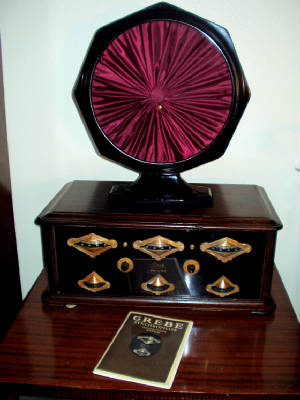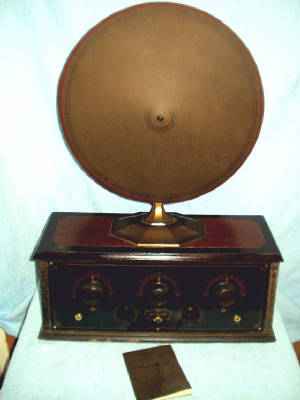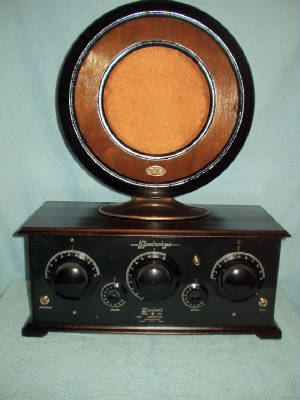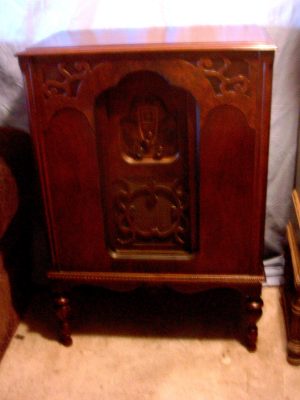 |
| Home |
| History and Background |
| 1920's radios, page 1 |
| 1920's radios, page 2 |
| 1920's radios, page 3 |
| 1920's radios, page 4 |
| 1920's radios, page 5 |
| 1920's radios, page 6 |
| 1920's radios, page 7 |
| 1920's radios, page 8 |
| 1930's radios, page 1 |
| 1930's radios, page 2 |
| 1930's radios, page 3 |
| 1930's radios, page 4 |
| 1930's radios, page 5 |
| 1930's radios, page 6 |
| 1930's radios, page 7 |
| 1930's radios, page 8 |
| 1930's radios, page 9 |
| 1930's radios, page 10 |
| Camera album, page 1 |
| Projector album, page 1 |
| Sewing machine album, page 1 |
| Magic lantern album, page 1 |
| Contact Me |
|
|
 |
|
|
 |
|

My 1925 Grebe MU-1 Synchrophase receiver with synchro-chains and upper frequency switch (I believe this is the mid-model).
A Beautiful radio, and an excellent performer! Also shown with the original owner's manual. The speaker is a Sonochorde
Senior type A, also a great performer. What a set-up, huh?

Here we have a not-very common A-C Dayton model XL20-6, 6 tube TRF from around 1925. Uses 01A tubes (three
for RF ampl., one detector, and two for AF ampl.). Not very common because most model XL20s were 5 tube, and the 1926
6 tube was called the model XL30. I believe that this radio was an interim model until the XL30 could be brought to
market as the chassis are quite similar with the exception of the number of tuning knobs (the XL30 only had two). I've
only seen one other on another website, and the books I have don't even list this one. The silkscreened front panel
is MINT! Shown with a 1925 Western Electric model 540AW cone speaker and the speaker instruction manual (hard
to find). This speaker works absolutely fabulous! Now have six of these great speakers (two of them
being the very uncommon Canadian Northern Electric R-540s). The cone for this beautiful speaker was made by
Buford Chidester.
|
 |
|

Here's a 1925 Standard Radio Corp. Standardyne 5 tube TRF, the forerunner to the B5. Unusual in that the AF transformers
are mounted to the top of the chassis board along with the pancake coils and all resistors, and only the wiring is under,
unlike the later B5. This one still has the Standard Radio Corp. resistors still in place (one for the grid-leak and one
for each tuning condenser). This model (no model number) was Standard's first radio. Also shown with a 1925
Rola Recreator cone speaker. Both work like a charm.

Here's a 1929 American Bosch model 48C, 7 tube AM console receiver. One of the last radios using a TRF
receiver circuit with a variometer instead of the Superheterodyne circuit. Works rather well considering the antiquated
(even for back in 1928) chassis used; in fact I listen to it about 4 times a week. The previous owner beautifully restored
the cabinet, but didn't know anything about electronics, so had to restore the chassis myself. The chassis needed one
power choke, two audio transformers, all new resistors, all new capacitors, a new potentiometer for the volume control, 4
tubes, new wiring..., could go on, but you get the idea. Turned out O.K., though. The picture doesn't do this
radio any justice at all!
|
 |
|
|
 |
|
|
|
|
|
|
|
 |

